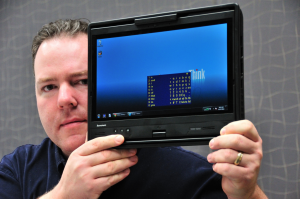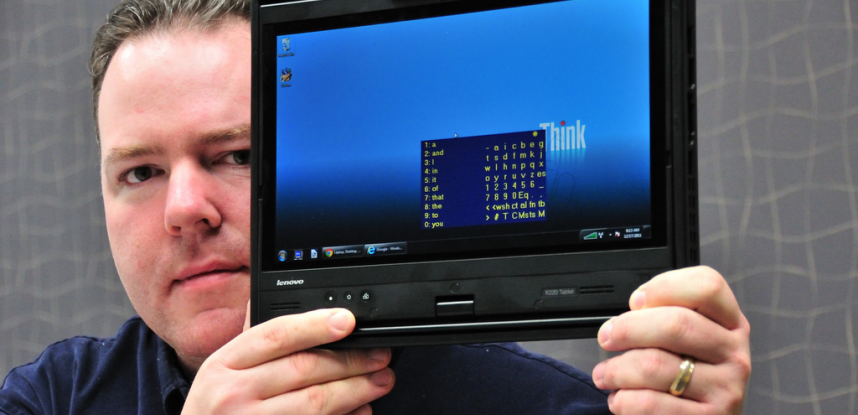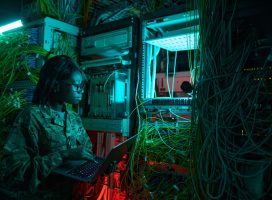Could Stephen Hawking’s voice go end-of-life (EOL)?

Intel engineer Travis Bonifield holds a replica of the custom PC he recently created for Stephen Hawking
Whether you’re checking out his illuminating talks on the nature of the universe, theoretical cosmology and quantum gravity; watching him play himself on Star Trek: The Next Generation, The Simpsons and Futurama; or geeking out to MC Frontalot’s rap, science, and quotations; chances are you’ve heard Stephen Hawking’s iconic voice.
What most people don’t realize is that while Stephen Hawking is very much alive, his voice could risk going end-of-life (EOL). Until recently, the computer responsible for helping Stephen Hawking communicate with the world is made up of three parts: a Lenovo X220 tablet PC, a custom black box containing various peripherals, and the hardware voice itself.
According to Sam Blackburn, the technician, who for five years kept Stephen Hawking’s communication systems running, the card inside Stephen’s hardware voice synthesizer dates back to the 1980s, “this particular one contains Stephen’s voice. There’s a processor on it which has a unique program that turns text into speech that sounds like Stephen’s, and we have only two of these cards. The company that made them went bankrupt and nobody knows how it works any more.”
In situations like this, there are a few options:
- Engineer a work-around for the critical technology: Reverse engineering technology is difficult, complicated, requires specialized skills and tools, and is often very expensive.
- Implement a whole new system: We’re talking about some one’s voice, and a signature sound that even Pink Floyd used in “Keep Talking” from the 1994 album The Division Bell. Also, implementing a whole new system introduces its own issues.
In fact, according to Intel, who has been working with Stephen Hawking to manage his computer systems and technology over the past couple years:
“… What we were finding out is that it would start all those applications so fast that it didn’t have time to initialize the hardware devices yet.
So his voice application would be started, but the security key for the voice application wouldn’t be initialized yet. We actually had to put some startup delays in and make it wait 5 seconds so that the hardware devices could finish being initialized by the time the CPU started running all those applications.”
We often think of EOL and obsolescence as issues that impact embedded equipment companies; however stories like this one brings home the reality that obsolescence issues can ultimately affect end-users in very personal ways: from rail passengers, to war fighters…to Stephen Hawking and his signature voice.
The GDCA Team




